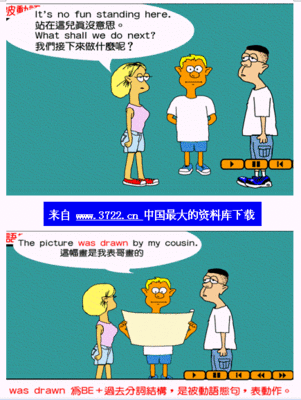In mathematics, an homogeneous function is a functionwith multiplicative scaling behaviour: if the argument ismultiplied by a factor, then the result is multiplied by some powerof this factor. More precisely, if f: V → W is a functionbetween two vector spaces over a field F, then f issaid to be homogeneous of degree kinF if
(1)
for all nonzero α ∈F and v ∈V. When the vector spaces involved are over the realnumbers, a slightly more general form of homogeneity is often used,requiring only that(1) hold for allα>0.
Homogeneous functions can also be defined for vector spaces withthe origin deleted, a fact that is used in the definition ofsheaveson projectives space in algebraicgeometry. More generally, ifS⊂V is any subsetthat is invariant under scalar multiplication by elements of thefield (a "cone"), then an homogeneous function from S toW can still be defined by (1).
Remark:
A homogeneous function is not necessarily continuous, as shownby this example. This is the function f defined byf(x,y) =x if xy > 0or f(x,y) =0 if . This function ishomogeneous of order 1, i.e. f(αx,αy) =αf(x,y) for any real numbersα,x,y. It isdiscontinuous at y =0.Linear functions
Any linear functionf: V →W is homogeneous of degree 1, since by the definitionof linearity
for all α ∈ Fand v ∈ V.Similarly, any , multilinearfunctionf:V1 × V2 × ...Vn → W is homogeneous ofdegree n, since by the definition of multilinearity
for all α ∈ Fand v1 ∈V1, v2 ∈V2, ..., vn ∈Vn. It follows that the n-th differential of a functionf: X →Y between two Banach spaces X and Y ishomogeneous of degree n.
Homogeneous polynomials
Monomialsin n variables definehomogeneous functionsf:Fn → F. For example,
is homogeneous of degree 10 since
- .
The degree is the sum of the exponents on the variables; in thisexample, 10=5+2+3.
A homogeneous polynomial is a polynomial made up of a sum ofmonomials of the same degree. For example,

is a homogeneous polynomial of degree 5. Homogeneous polynomialsalso define homogeneous functions.
Polarization
A multilinear functiong: V ×V × ... V → F from the n - thCartesian product of V with itself to thegroundfieldF gives rise to an homogeneousfunctionf: V →F by evaluating on the diagonal:
The resulting functionf is a polynomialon the vector space V.
Conversely, if F has characteristic zero, then given anhomogeneous polynomialf of degree non V, the polarization off is amultilinear function g: V ×V × ... V → F on the n-thCartesian product of V. The polarization is defined by
These two constructions, one of an homogeneous polynomial from amultilinear form and the other of a multilinear form from anhomogeneous polynomial, are mutually inverse to one another. Infinite dimensions, they establish an isomorphism of graded vectorspaces from the symmetric algebra of V∗ to thealgebra of homogeneous polynomials on V.
Rational functions
Rational functions formed as the ratio of twohomogeneous polynomials are homogeneous functions off of theaffine conecut out by the zero locus of thedenominator. Thus, if f is homogeneous of degree mand g is homogeneous of degree n, thenf/g is homogeneous of degreem−n away from thezeros ofg.
Non-Examples
Logarithms
The natural logarithm f(x) = lnxscales additively and so is not homogeneous.
This can be proved by noting that f(5x) = ln5x = ln5 +f(x), f(10x) = ln10 +f(x), and f(15x) = ln15 +f(x). Therefore such that .
Affine functions
The function f(x) = x + 5does not scale multiplicatively.
Positive homogeneity
In the special case of vector spaces over the real numbers, thenotation of positive homogeneity often plays a more important rolethan homogeneity in the above sense. Afunctionf: V {0} →R is positive homogeneous of degree k if
for all α >0. Here k can be any complex number. A (nonzero)continuous function homogeneous of degree k onRn{0}extends continuously to Rn if and only ifRe{k} >0.
Positive homogeneous functions are characterized by Euler'shomogeneous function theorem. Suppose that thefunctionf:Rn {0} → R is continuouslydifferentiable. Then f is positive homogeneous of degreek if and only if
This result follows at once by differentiating both sides of theequation f(αy) =αkf(y) with respect to α andapplying the chain rule. The converse holds by integrating.
As a consequence, suppose that f: Rn →R is differentiable and homogeneous of degreek. Then its first-order partial derivatives are homogeneous of degreek−1. The result followsfrom Euler's theorem by commuting the operator with the partialderivative.
Homogeneous distributions
A compactly supported continuous functionf onRn is homogeneous of degree k ifand only if
for all compactly supported test functions φ and nonzero realt. Equivalently, making a change of variable y =tx,f is homogeneous of degreek if and only if
for all t and all test functions φ. The last displaymakes it possible to define homogeneity of distributions. AdistributionS is homogeneous of degreek if
for all nonzero real t and all test functions φ. Here theangle brackets denote the pairing between distributions and testfunctions, and μt:Rn → Rn isthe mapping of scalar multiplication by the real numbert.
 爱华网
爱华网

